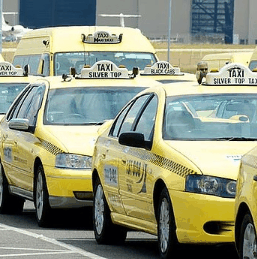
Six weeks ago, my wife and I attended a 60th birthday for a relative, which was held in the evening at a restaurant two suburbs away. At around 6pm, we attempted to call 1300 CABS only to hear the phone continually ring-out and no operator attend our call. After about half an hour of trying, we gave up and drove to the restaurant instead.
Upon arriving at the restaurant, we discovered that my in-laws had booked a cab earlier in the day, only for it not to turn up. So they, too, were forced to drive to the restaurant and would be around half an hour late.
What was particularly frustrating about that evening was that there were no major events or football games in Melbourne, so there was no excuse for not being able to get a cab. It also was not the first time that something like this has happened.
I used to experience similar issues with taxis in Canberra, particularly during parliamentary sitting weeks, where it was next to impossible to book a cab due to limited numbers.
A key factor behind the unreliability of the taxi industry across Australia is that taxi licences have been artificially restricted via government regulation. In the case of Melbourne, the overall number of licences has barely risen since the 1970s, despite the huge growth in the city’s population.
Reflecting this undersupply, the price of Melbourne taxi licences had also skyrocketed – from under $130,000 in 1989 to over $500,000 in 2012 – an increase of over 7% per annum.
This deliberate undersupply of taxis has had some deleterious impacts on the industry.
The lack of competition and “closed shop” mentality has meant that there is minimal incentive to improve performance and provide better services. It has also driven a wedge between the driver, who typically earns a pittance, and the customer, who pays too much for the service. For example, according to the agency which sets taxi fares in New South Wales, a taxi driver earns a paltry $29,000 a year, whereas customer surveys of taxis costs and service typically show widespread disatisfaction.
As with land, the rental value component of taxi fares goes to the owners of the plates, just like rents on land. So taxi drivers are typically left paying the licence holder an exorbitant share of their fares – often 50% – leaving them with little left over.
The restriction on taxi licences is totally unnecessary, punishing drivers whilst also leaving customers paying high prices for (often) poor service.
Fortunately, change is afoot. Former ACCC Chairman, Professor Alan fels, was recently engaged to lead the Victorian Taxi Inquiry, which recommended a comprehensive overhaul of the licencing system. Under the reforms, the government will sell licences for $22,000 a year and will no longer restrict how many are sold.
By increasing the supply of taxi licences and lowering their cost, more drivers will be able to purchase their own licence, operate independently, and keep what they earn. Customers should also benefit from more taxi availability and potentially lower prices.
The big losers will be the current taxi licence holders, who will see the value of their licences fall as the monopoly over licence numbers is broken – akin to what would happen to land holders in the event that urban land supply and infrastructure provision was significantly increased, and planning rules liberalised.
Ultimately, restrictions on taxi licences serve no useful purpose and are a relic from Australia’s protectionist past. Far better to set performance standards and allow anyone who wanted a taxi licence to obtain one, subject to meeting those standards.
[email protected]
www.twitter.com/leithvo

